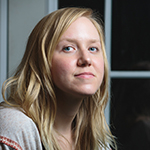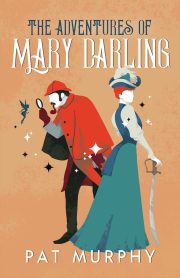So You’re Thinking about a Low-Residency MFA
Low Residency MFA’s in Creative Writing offer students a chance to study and practice writing without having to move or quit their jobs. There are more than sixty such distance-based programs in the U.S. and Canada. Most follow the same format: for two to three years, students meet with their instructors and fellow classmates in person for a residency every semester. Residencies usually last a week to ten days. For the rest of the year, students communicate with mentors online to submit stories and fulfill assignments.
I chose the Stonecoast Maine Program, because they offer an MFA in Popular Fiction, and their instructors were top-notch. Plus, spending ten days in Maine twice a year was appealing. Others may have different needs. Here are some points to consider before jumping into low-res…
Motivation
I mentioned before that I had established a writing routine prior to attending Stonecoast. This is imperative to someone considering a low-residency MFA.
Each semester we were assigned a mentor to whom we submitted a set amount of creative writing each month. For the first two semesters, we were also required to submit responses to books we read throughout the semester.
Some mentors agreed to look at revisions of creative work. Some encouraged students to submit creative responses or book review-style responses. But how thoroughly we undertook the work was entirely up to us. I knew students who complained that they didn’t grow as writers or readers due to a lack of outside motivation. Those students might have been better off in a full-residency program where they’d be required to attend classes on a weekly basis, under more watchful eyes.
But for writers who are self-motivated, a low-residency MFA can be a perfect option. During my time at Stonecoast, I challenged myself with each creative assignment. At the end of each semester, I asked my mentor what Big Picture issues they noticed in my writing. Having a mentor read so much of my fiction was invaluable—and may not have been possible in a full-residency program where instructors often work with a much larger group of students.
Money
I entered my MFA from a place of privilege; my parents agreed to help out with the cost. In the end I took out only a small amount of student loans. Many low-residency programs offer scholarships, but the number of scholarships awarded are often few and far between.
Fully funded MFA programs are usually full-residency and are more competitive. Usually they will finance a student’s education with a Teaching Fellowship, which may not work for anyone who needs to keep their current job.
For people only looking to learn more about writing and less concerned with earning a degree, a workshop might be a better option. There are a wide variety of workshops, ranging from summer-long workshops to one-day workshops, some of which take place online.
Community
One might think that low-residency programs don’t offer as much in terms of community, but I made many best friends at Stonecoast. I still talk with them online at least once a week and visit with them at conventions. One of the coolest things about attending Stonecoast was that the majority of students lived outside Maine, so I met people from all over the U.S. Most everyone in a low-residency MFA has a day job—many of which are unrelated to writing—which made the conversations that much more vibrant. Plus, when I travel, I now have a friend in almost every state.
But if you’re hoping to strengthen your connections within academia, low-residency may not be the best place to do that, since many low-residency programs are less focused on pedagogy than full-residency programs.
End Goals
I came out of Stonecoast with a swelling sense of purpose, a new excitement about the writing world, new friends, and new insight into craft. And those trips to Maine? Some of the best times of my life.
Before attending Stonecoast I dreamt of being a writing professor. This was before I knew the sorry state of academic writing jobs today. Even if I wanted to apply, I wouldn’t feel prepared based on what I learned at Stonecoast alone. We were required to lead an hour-long presentation our graduating semester. A few students chose to lead their presentations on pedagogy, and a few instructors led pedagogy presentations, so I picked up a few things. Some low-residency programs offer assistantships for residency workshops. Stonecoast has recently begun to offer a teaching residency where a student returns post-graduation to earn teaching. But there are no semester-long teaching fellowships in most low-residency programs, which means no direct experience with the traditional academic environment. Pedagogy would need to be studied independently by any student hoping to go into teaching. This isn’t necessarily a bad thing; some students, particularly those looking to pursue less-traditional teaching jobs, may prefer a more relaxed, fully-customizable approach.
A lot of people express concern that a program won’t be open to genre. Some programs may welcome genre; some may forbid genre; others may do so without knowing how wide the genre category can stretch. Much of my favorite SFF would be accepted even by professors who claim they don’t like SFF. But most people don’t want to study under an instructor unaware of the breadth of fantastical fiction.
The best bet to find a genre-friendly program is to research the instructors. Does their work contain fantastical elements? A few programs explicitly offer a genre, SFF, or popular fiction focus. Ask around. Plenty of SFF writers are familiar with programs and can offer their opinion on whether one will be friendly. Email the program’s instructors and ask them how genre fares in their classes and in the program as a whole.
Stonecoast gave me knowledge that led to my first publications. It helped me come out of my shell; usually reserved, I was encouraged to socialize by the fact that, in awkward moments, I could talk books and bring the conversation back to life. I was particularly suited to the experience at that time. That won’t be the case for everyone. For me? I wouldn’t trade my MFA experience for the world.
•••
Bonnie Jo Stufflebeam’s fiction and poetry has appeared in over 40 magazines and anthologies such as Clarkesworld, Lightspeed, and Beneath Ceaseless Skies. Her novelette “The Orangery” was a finalist for the 2016 Nebula Award. In 2015 she released a collaborative fiction-jazz album Strange Monsters. She also created and coordinates the annual Art & Words Collaborative Show in Fort Worth, Texas.



